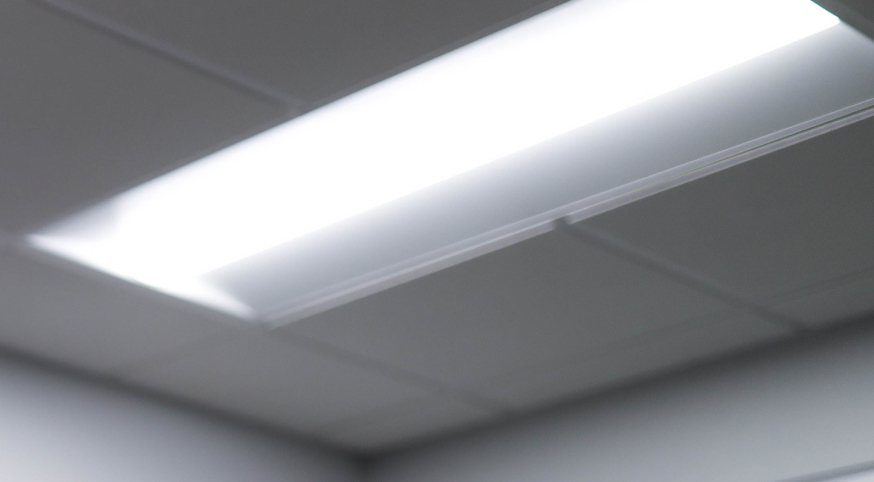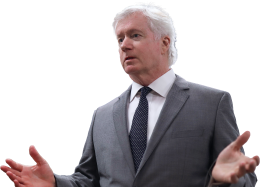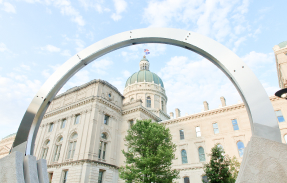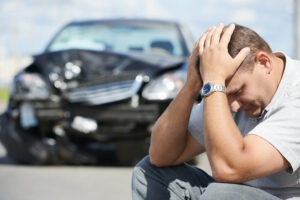Not many cities are known for how amazing their streets are, but Carmel, Indiana is recognized around the world for its successful roundabouts.
Since the 1990s, Carmel has transformed by constructing and replacing intersections with more than 130 roundabouts. As a personal injury law firm that’s been around for more than 100 years, Vaughan & Vaughan has seen, firsthand, the traffic benefits of roundabouts and how they can prevent motor vehicle crashes.
Now “Roundabout City” is in the news again. A new study says Carmel, Indiana’s “dog bone” roundabout slashes car accidents — maybe even more so than traditional roundabouts.
Car accidents and roundabouts
Roundabouts are alternatives to intersections regulated by stop signs or traffic signals. The circular intersection eliminates the need for drivers to cross other lanes or oncoming traffic to make a turn. Essentially, roundabouts are designed to slow traffic speed but keep cars moving.
The Insurance Institute for Highway Safety recently analyzed years of crash data at Carmel’s Keystone Parkway dog bone, or double teardrop, roundabout. Shaped like a circle with a stretched middle, the uncommon design amazingly cut injury-causing car accidents by 84%. It also slashed overall accidents at the intersection of Keystone, East Carmel Drive, and 116th Street by two-thirds.
Meanwhile, the city’s traditional, single-lane roundabouts have decreased the number of injury-causing crashes by half, the IIHS says.
Carmel has a variety of roundabouts including those that are multilane and nine more teardrop-shaped structures. In the study, the IIHS looked at 21 single-lane, 10 double teardrop, and 33 with multiple lane roundabouts in the city. Analysts found that while double-teardrop and single-lane traffic circles reduce crashes, multilane roundabouts actually increase car accidents. While multilane roundabouts cause more property-damage-only type accidents, they do reduce injury-causing wrecks by 15%, researchers say.
But while roundabouts can reduce crashes from happening, they can’t prevent them all.
Your Case Will Get
The Attention It Deserves

Traffic circles don’t totally eliminate crashes
Traffic circles significantly cut down on car accidents because the design sends all vehicles going in the same direction. With all traffic going the same way, there are fewer opportunities for head-on, left-turn, and right-angle car accidents.
Still, even in the safest of environments, negligent drivers seem to find a way to collide with other vehicles. The four most frequent types of roundabout accidents are:
- Run-off the road accidents
- Rear-end collisions
- Sideswipe accidents
- Crashes when merging/entering and circling
Single-lane roundabout accidents were most likely to happen as vehicles entered while multilane traffic circles saw the most accidents as motorists exited.
Other types of traffic circle crashes can be caused by vehicles not yielding to pedestrians and bicyclists, sudden stops, and failing to yield to emergency responders.
Fatal accidents at roundabouts are rare, but they do happen. Common factors in deadly roundabout crashes include:
- Excessive speed
- Accidents involving motorcycle riders
- Collisions with fixed objects
- Driving under the influence of alcohol or drugs (DUI)
Why are roundabouts so popular?
Today, there are more than 7,500 roundabouts in the U.S., according to Roundabout Database. The nation also has about 550 traffic calming circles, and 150 rotaries.
More than 400 roundabouts exist in Indiana, and about 25% of them are located in Carmel. Including Carmel’s traffic circles, Hamilton County has more than 200 roundabouts. Other Indiana counties with 10 or more roundabouts include Hendricks, Marion, Tippecanoe, Johnson, and Boone.
Outside of the reduced crash benefit, roundabouts serve motorists in other ways like cutting down on traffic delays. A study of roundabouts in other states found that vehicle delays were cut by up to 37% where roundabouts replaced stop signs and up to nearly 90% when they replaced traffic signals.
By improving flow, traffic circles are also credited with reducing vehicle emissions and fuel consumption.
Despite the benefits, roundabout installation can be controversial in some communities. Part of the problem is that roundabouts are often confused with rotaries. This street design was utilized mostly in the 60s and 70s. But rotaries are typically much larger than roundabouts, have multiple lanes, and have posted speed limits of about 40 mph or higher.


Who is at fault in a roundabout crash?
Proving liability in a roundabout crash can be complicated without the right evidence. If you were injured in a traffic circle accident, it is important that you understand your legal rights and carefully consider all your available options. One of the best ways to do that is by talking to a car accident lawyer near you.
At Vaughan & Vaughan, our highly skilled attorneys have a reputation in Indiana for thoroughly investigating accidents, building rock-solid cases, and negotiating with insurance companies for the compensation our clients need and deserve. Our lawyers also work for clients on contingency, which means you don’t need any upfront money to hire us and you pay nothing unless we win your case.
Contact us today for a free consultation and learn how our law firm can help you. We’re located throughout Indiana—including an office on Clay Terrace Boulevard in Carmel—and would be honored to speak to you about your potential legal case.





